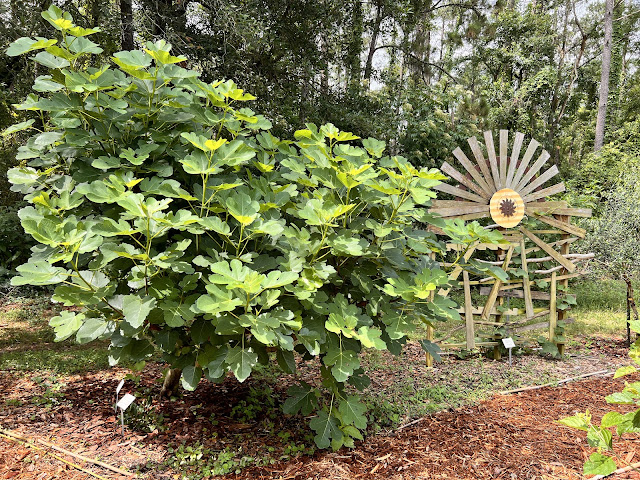 |
| Tridens flavus Purpletop Photo by Mail Order Natives |
IFAS has virtually NO published research or recommendations (at least that I have yet found) regarding the use of NATIVE plants (grasses, legumes, nitrogen-fixing and nematode resistant species, etc.) that can be utilized for our cover crops and perennial "chop and drop" and pathway plantings in a regenerative tiny lot urban home landscape.
So....it appears to suggest that it's going to be up to all of "the rest of us" (backyard gardeners and small market farmers) to work together, doing our own trials and research, collaborating "virtually" to develop a list of potential regenerative native plants, seed sources for same, and the seeding dates that work most successfully for the obvious and most desirable planting windows in Florida's North, Central, and Southern areas.
Anybody else "IN" on this project? Or an easy "virtual" way to collaborate (a place here on your awesome site?)
Here are some of my observations so far from my tiny, urban postage stamp lot in Zone 9, Chassahowitzka, FL (34448):
*Perennial nitrogen-fixing chop and drop:
Senna Ligustrina, aka "Florida Native Privit Cassia:
Awesome Success! Disease free, gorgeous glossy-green compound leaves that make beautiful compost and chop & drop when mixed or covered with any "brown" (leaves, pine straw, etc.). Seeds are easy to come by (look for them when you hike the woods...they're plentiful, readily germinate, and the resulting plants will self-seed forever....you'll never run out of seeds to keep and share). It attracts beneficials and pollinators; it hosts native butterflies; it gently shades and protects whatever seedlings (that the birds or your compost planted ;) beneath it, such as squash, pumpkin, watermelon, peppers, etc. It's strong branches don't lodge and can provide trellis for climbing volunteers (cowpeas, etc.). It dies back in a hard freeze, sometimes comes back from its roots in spring, and definitely reseeds to replace itself. It's easy to take out if you don't like where volunteers landed too :). If Senna ligustrina isn't the native Senna in your own Florida neighborhood....look for the Senna that IS :).
Nitrogen fixing lower shrub / herbaceous annual plant position (flower bed front or mid border height):
Chamaecrista (fasciculata, nictitans, etc. - the ones in your area): Partridge Pea:
Pollinator attracting, Nematode suppressing flowering plant:
* Gaillardia (o.k....I know...not really a "native," but it seems Florida-friendly enough here).
*Grass:
this is the most difficult for me: please post your finds!
So far:
Native Purpletop - Tridens flavus
seems most promising here (Zone 9), but I can't quite figure out the right seeding time. However, the existing plants we have provide excellent chop and drop, accept high-mowing when necessary (for neighbor-friendly front yard), come back with resilience when used as a perennial landscape element, and are easy to remove entirely where you don't want them anymore. They're a nice height for urban residential planting (knee-height), and their seed panicles are gorgeous purple-y decorative elements in your fall to winter landscape. Seeds are readily available online, affordable, and purchase of new seed becomes unnecessary if you maintain a perennial patch for your own seed-saving. It seems more tolerant of semi-shade, and the dramatic sun to shade conditions that can happen in urban landscapes where "urban" features of the tiny lot (your neighbor's trees and fences, the daily and seasonal shading caused by your own house, your neighbor's homes, etc.). It seems to tolerate urban alkaline-ish soils (like that over your existing or former septic field) much better than some of the acid-soil demanding native grasses.
Lots more to share...but this "comment" is already much too long.
I know you guys already know most if not all of the above...but perhaps my comment inspires or incites :) some of you to post your own better suggestions :).
Looking forward to the day when we can all surf online and find affordable bulk quantity seeds for Florida Native Cover Cover Crops and path grasses (like the OTHER states already have with their "eco-grass" selections).
Why are our Florida University extensions so behind the ball on this?
I'm old, and on the spectrum...so please forgive me.
Wishing you all health and happiness!
Hope (E. Hope Corona)
Gardening on an impossibly tiny postage stamp urban lot in Chassahowitzka, FL (Zone 9, on a canal to the Chassahowitzka River & Gulf....the front lines of sea level rise and climate change 🙄)


































































